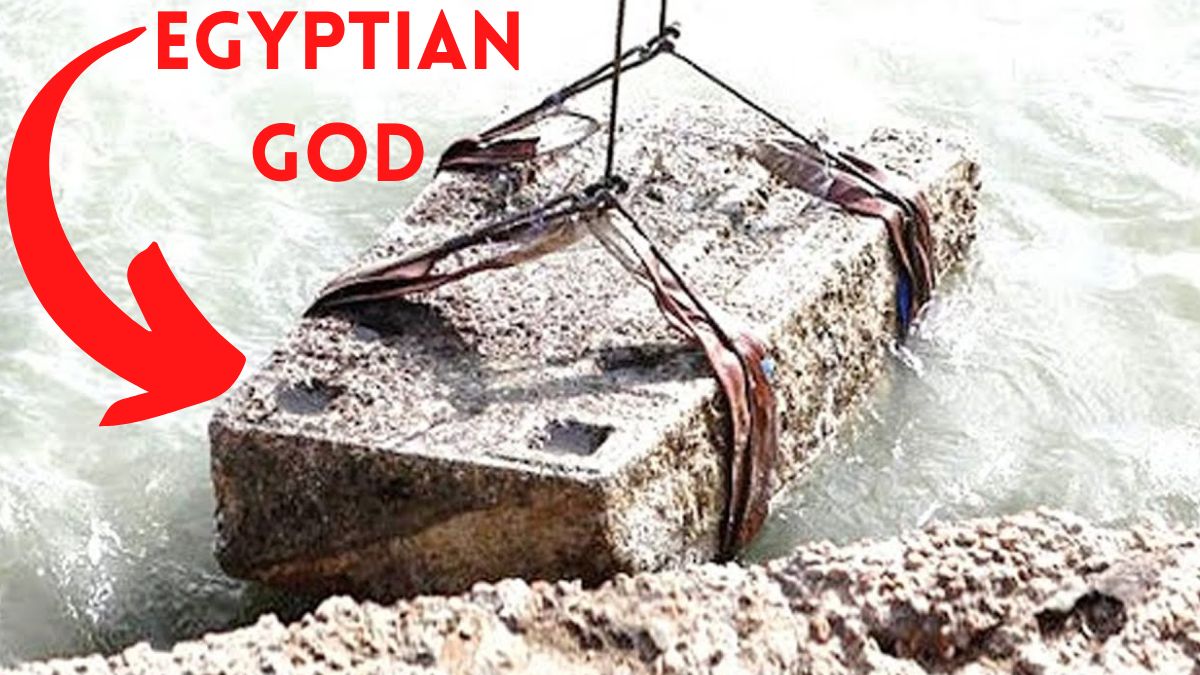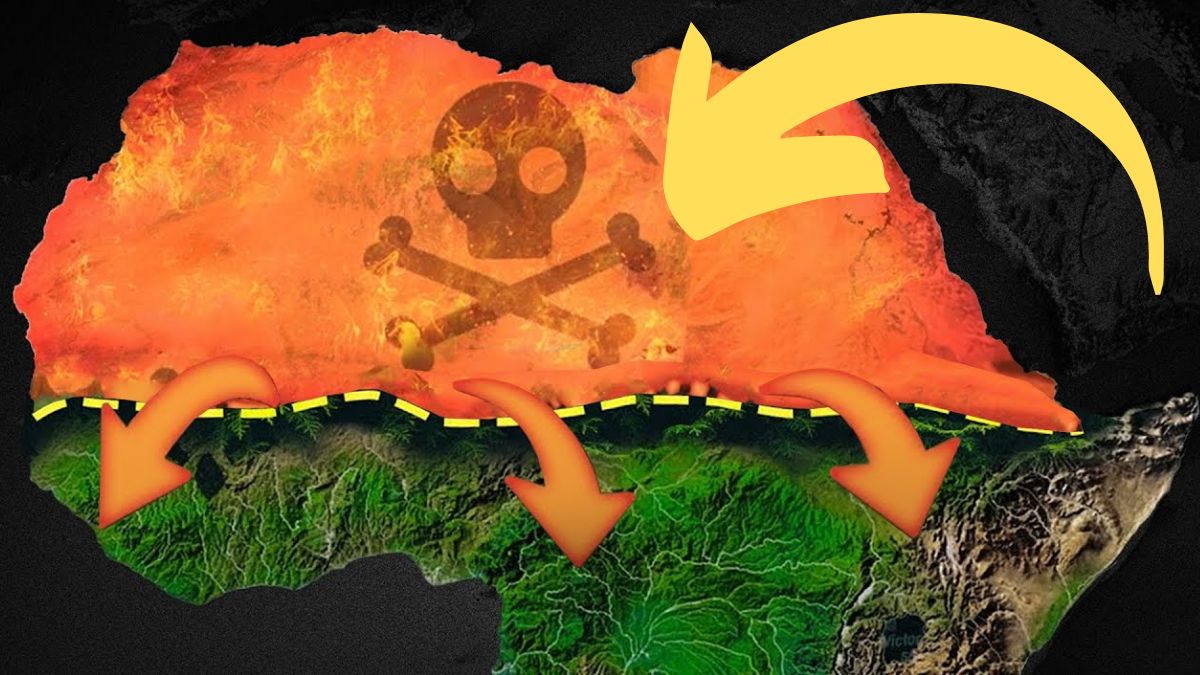
The ancient Egyptians left behind a huge legacy, including massive structures like the Great Pyramid and Sphinx. However, because so much about these ancient structures was a mystery for a long time, researchers developed incorrect theories about them. Joe Rogan, a well-known host of podcasts, has been speaking with guests who have shared secrets about these sphinxes. How old exactly are the massive structures and what lies behind them? We will follow Joe Rogan as he uncovers the frightening truths about the Egyptian sphinxes in this video.
Egypt is a country with a long history, and the people there treasure every moment of it, allowing them to connect with their roots. In a lavish ceremony that was hosted by Egypt’s Ministry of Tourism and Antiquities, the country in North Africa recently reopened the 1.7-mile-long Avenue of the Sphinxes in Luxor. The avenue is flanked by more than 1,000 Sphinx and RAM statues. The path connects the temples of Luxor and Karnak in the east of Egypt and has been covered in sand for centuries. Egyptian President Abdel Fatile Sisi attended the extravagant march, which featured pharaonic costumes, a symphony orchestra, and boats on the Nile.
Leading Egyptian archaeologists Zakaria gonheim and Muhammad Abdel khadiya excavated in front of the Luxor Temple in 1949 and came across the Avenue of the Sphinxes. Between 1958 and 1960, they found the first section of the Avenue near the Luxor Temple. The Great Sphinx of Giza, on the other hand, is the Sphinx in Egypt that receives far more attention. If you know Joe Rogan well, you’ll agree that he welcomes guests whose viewpoints are different from the norm. We therefore anticipated sparks to fly when he invited Professor Robert shock to discuss the Sphinx of Giza’s origin and age.
Even though the entire scientific community disagrees, the expert egyptologist presented evidence that this Sphinx of Giza is much older than conventional scientists believe it to be. However, what is the scientific consensus regarding this ancient Giza structure? A sphinx is a creature that has the head of a human and the body of a lion, with some variations. It is a well-known character from Greek, Asian, and Egyptian mythology. In ancient Egypt, this sphinx served as a spiritual protector and was typically depicted as a male with a pharaoh’s headdress, just like the Great Sphinx. Figures of the creatures were frequently included in complexes of tombs and temples.
For instance, the previously mentioned Sphinx Hallie in Upper Egypt is a Two-Mile Avenue lined with Sphinx statues that connects the temples of Karnak and Luxor. The granite Sphinx statue at the Metropolitan Museum of Art in New York and the large Alabaster Sphinx at the Rameseed temple in Memphis, Egypt, both feature sphinxes depicting the female pharaoh Hatshepsut. The Sphinx was brought from Egypt to Asia and Greece in the 15th-16th centuries BC. The Asian Sphinx, in contrast to the Egyptian model, had eagle wings, was typically female, and was frequently depicted sitting on its haunches with one poor raised. In Greek mythology, the Sphinx had wings and a serpent’s tail, and it devoured all travelers who were unable to solve this riddle.
Yikes! Interestingly, the name that the Great Sphinx was given by Egyptians during its peak remains a mystery due to the fact that the term “Sphinx” originates from Greek mythology approximately 2,000 years after the statue was allegedly constructed. Due to the lack of texts that discuss the statue, it is also unclear how Egyptians viewed the Great Sphinx during the Old Kingdom, which lasted from 2613 to 2181 BC. “Inscriptions between the greats thinks his paws on a pink granite slab tell the story of how the statue was saved from the sands of time,” however, Legend has it that Prince Tomosa, the son of Armand Hotep II, slept next to the Sphinx until Moses had a dream in which the Sphinx, calling itself “her Mac hit,” lamented its disarray, and agreed to a deal with the young prince. He would be able to become Pharaoh if he restored the statue after removing the sen. To fulfill his promise to become Pharaoh Tomosa IV, the prince established a cult of Sphinx worship among his subjects.
The Sphinx was portrayed in reliefs, statues, and paintings all over the country, and it became a symbol of power and royalty. However, Tomosa’s efforts were insufficient to save the Sphinx because it was eventually forgotten once more; The passage of time damaged its face and eroded its body. It even lost its nose, though some stories say that when Napoleon’s troops arrived in Egypt in 1798, they used a cannon to cut off the statue’s nose. Drawings from the 18th century indicate that the nose vanished much earlier; more likely, the nose was deliberately destroyed by a Sufi Muslim in the 15th century to protest idolatry.
The Sphinx was really covered in sand up to its shoulders until the mid 1800s when a Genoese swashbuckler named Commander Giovanni Batista Cavilia drove a group of 160 men to attempt and at last neglect to recover it. Be that as it may, French paleontologist August Mariette had the option to get some free from the sand from around the model, and in the nineteenth and twentieth hundreds of years, another French excavator, Emile Barraza, made another huge uncovering push. It was only after the last part of the 1930s, nonetheless, that Egyptian prehistorian Selim Hassan had the option to liberate the animal from its sandy burial place.
Zoom today, this Sphinx is sadly falling apart because of wind, mugginess, and contamination. Reclamation endeavors have been continuous since the mid-1900s, with some of them falling flat and causing extra harm to the Sphinx.
Presently, there is no question that the Giza Sphinx is old – even Shock concurs with this. What is easy to refute is exactly the way in which the sculpture is. The most well known and generally acknowledged hypothesis about the Incomparable Sphinx is that it worked for Pharaoh Kephren around 2603 to 2578 BC. Going by hieroglyphic texts, Kafra’s dad, Pharaoh Khufu, fabricated the Incomparable Pyramid, the most seasoned and biggest of Giza’s three pyramids. Kafra then chose to refer to his own pyramid close to his dad’s, the point at which he became Pharaoh. Kafra’s pyramid is 10 feet more limited than the Incomparable Pyramid yet is encircled by a more intricate complex that incorporates the Incomparable Sphinx and different sculptures. The presence of red shade buildups on the Sphinx’s face recommends that the sculpture was painted.
Given the association of the pyramids and the Sphinx, a few researchers trust the Incomparable Sphinx and Sanctuary complex filled a divine need, to be specific, to revive the spirit of the Pharaoh Kafra by diverting the force of the sun and different divine beings.
Be that as it may, what proof do allies of this form of the Sphinx’s set of experiences depend on? All things considered, for a certain something, this Sphinx’s head and face are strikingly like a day to day existence size sculpture of Kafra found in the Valley Sanctuary, or at least, the remains of a structure nearby the Incomparable Sphinx, by Mariette during the 1800s. Mariette likewise found the remaining parts of a boulevard or processional street that associated the Valley Sanctuary
“His estimations of the floor plan and other definite perception to the vestiges uncovered beforehand obscure mathematical connections, which were affirmed by French archeologists. Schwala found comparable connections in different areas. He revealed his discoveries in 1949 and gave a more itemized account in 1957. A commentator for the Diary of Close to Eastern Investigations encouraged his partners to treat Schwala’s work in a serious way since it tested the thought of Egypt’s numerical mediocrity and proposed another aspect to Egyptian strict conviction. Notwithstanding, Schwala started discussion by appointing speculative implications to Egyptian design and engravings, and different researchers excused his discoveries.
Schwala found a peculiar actual oddity in the Giza Pyramid complex. He saw that the disintegration on the Sphinx was very unique in relation to the disintegration on different designs. Trawler suggested that water, as opposed to wind-borne sand, was the reason for the disintegration on the Sphinx. Yet, no one figured out the ramifications of this perception at that point, and it went to a great extent inconspicuous until the 1970s when free Egyptologist John Anthony West raised the issue.
West analyzed the disintegration on the Sphinx, its sanctuaries, and the fenced in area walls to the disintegration on other Giza Level designs. The stone on the Sphinx and its encompassing walls was severely worn, giving it a listing appearance. The edges were adjusted, and profound gaps were apparent. Surfaces on different designs on the level showed just the more honed scraped spot of wind and sand. Presently, Egypt experienced centuries of weighty precipitation which denoted the post-cold North would move for the calm zone. This period endured around 10,000 to 5,000 BCE, and toward its finish, the Sahara had changed from Green Savannah to Abandon. Then from around 4,000 to 3,000 BCE, there was a more limited yet more extraordinary time of precipitation which tightened by the center of the third thousand years.
West estimated that the unmistakable enduring on the Sphinx complex was brought about by flooding from the post-frigid progress, suggesting that this Sphinx was cut during or before the change. Universal archeologists straight wouldn’t think about West’s hypothesis. Notwithstanding, West had the option to convince Shock to explore the inquiry in 1990, and the two wound up in Giza in June of their year.
Shock found weighty erosional highlights on the body of the Sphinx and the walls of this Sphinx’s fenced area. The pit or empty left after the Sphinx’s body was cut from the bedrock caused him to finish up; it might have just been brought about by precipitation and water spillover. Shock noticed that the Sphinx is situated on the edges of the Sahara desert, and the district has been very parched for the last 5,000 years. Moreover, a few designs safely dated to the Old Realm show just wind and sand disintegration, something else entirely from the disintegration by water. Shock presumed that the most established bits of the Incomparable Sphinx known as The Center Body should trace all the way back to a previous period, no less than 5000 BCE yet additionally possibly to the furthest limit of the last ice age around 10,000 BCE when the environment was altogether different and included more downpour.
Individuals get confused. They say, ‘wouldn’t there be rising Nile floods?’ No, geographically, that would give an altogether different mark on the stone. It’s not floods coming up from the base, it’s really precipitation and precipitation overflow coming from a higher place. Many individuals protested the Incomparable Sphinx being that old inferable from the way that the head is obviously a dynastic Egyptian head. The dynastic period didn’t start until around 3000 BCE. However, assuming that you look at the ongoing Incredible Sphinx, you might see the head is excessively little for the body. Shock claims clearly the flow head isn’t the first head. The first head would have weakened due to enduring and disintegration. It was later recarved during homegrown times
“In any case, there is no proof of high culture going back roughly 12,000 years at Gobekli Tepe in Turkey. In any case, why these early glints of progress and high culture disappeared, just to return millennia after the fact, has stayed a significant secret. However a few researchers have attempted to rationalize the novel enduring of these Sphinx utilizing various speculations, one such specialist is Robert Sanctuary who accepts a channel is liable for the water enduring of the sculpture.
Be that as it may, Shock recognizes six bits of proof. The first is that the center blocks of the Sphinx sanctuary, worked from blocks eliminated from the Sphinx walled in area when the Sphinx body was first cut, and the Valley Sanctuary toward the South have weighty precipitation-actuated enduring during the Old Realm. These limestone sanctuaries were repaired with Aswang Rock facings. The idea of the extremely old enduring scene on the sanctuary blocks underneath the Old Realm Stone facade can’t be made sense of by the channel hypothesis. Second, surface disintegration is significantly more serious on the western finish of these Sphinx nooks, tightening decisively toward the Eastern end. This is because of old downpours in the space’s paleo-hydrology.
This disintegration is contradictory with the nook’s pooled water. Third, downpour has dissolved the most elevated levels of the center part layers, as found in these Sphinx fenced in area on the western end. Assuming that the channel hypothesis were right, the lower layers on the Eastern finish of these Sphinx walled in area would have been generally vigorously disintegrated because of water acquired by means of trenches from the Nile, yet this isn’t true.
Fourth, in light of his examination, seismate information showing the profundity of enduring underneath the floor of the Sphinx nook demonstrates a base time of something like quite a while back. The center body of the Sphinx and, all the more everything being equal, on the request for a long time back. Standing water in the Sphinx walled in area wouldn’t hurry the profundity of enduring and underneath the nooks floor. Fifth, at the upward fishers saw in the walls of the Sphinx nook are demonstrative of precipitation and water spillover. They show no attributes that are analytic or even reminiscent of being shaped by fake digging these Sphinx walled in area, as proposed by Robert Sanctuary.
Furthermore, six, expecting the Sphinx was in a pool, either the water level around the Sphinx was equivalent to the encompassing water table or the pool’s walls and floor was fixed and watertight, and any counterfeit walls, for example, on the Eastern end were sufficiently able to endure the water pressure. Eminently, the momentum Western finish of these Sphinx nook is at a lot higher height than the Eastern end, yet water disintegration is noticeable at the higher rises the Western end since water looks for its own level.
On the off chance that the water in an alleged canal arrived at the level of the Sphinx nook’s West end, then the Eastern end as well as the walls along the northern and southern sides probably moved toward a practically identical level. This is whether or not the good mass of the nook, which frames the Western Mass of these Sphinx Sanctuary, has a characteristic Bedrock Establishment or is totally made of cut and spot Stone.
The antiquated water table was a lot lower than the level of these Sphinx nooks floor or probably these Sphinx Sanctuary would have been overflowed. These Sphinx nook could never have held a profound pool of standing water in the event that it was just cut from the Bedrock similar to all proof proposed. A bedrock in the nook has a cast morphology and would release like a sifter.
Fences in the area should be totally fixed, maybe with mortar or concrete, yet there is no proof of such fixing. Assuming the walled in area had been fixed thusly, it would be contrary with the Sanctuary’s digging hypothesis for the upward fishes.







